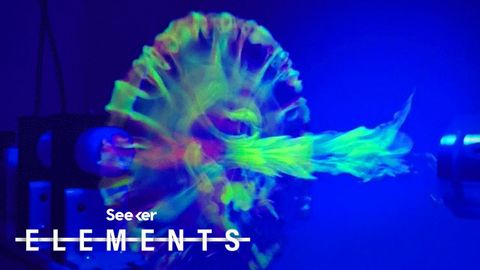
字幕と単語
渦の衝突は、秩序が無秩序に変わる方法を解明する可能性がある (Vortex Collisions Could Unravel How Order Turns to Disorder)
00
Summer が 2021 年 01 月 14 日 に投稿保存
動画の中の単語
stretch
US /strɛtʃ/
・
UK /stretʃ/
- v.t./i.ストレッチをする : 体を伸ばす;伸ばす : 張る : 広げる
- n.ストレッチ : 体を伸ばすこと;一続きのもの;(一続きの)時間 : 期間
A2 初級TOEIC
もっと見る scale
US /skel/
・
UK /skeɪl/
- n. (c./u.)大きさや格など;うろこ;はかり;音階;規模
- v.t./i.(縮尺比に従って)拡大する : 縮小する;登る;魚のうろこを取る
A2 初級TOEIC
もっと見る average
US /ˈævərɪdʒ, ˈævrɪdʒ/
・
UK /'ævərɪdʒ/
- n. (c./u.)平均
- v.t.平均する
- adj.典型的な : 普通の : ありふれた : 普段の
A2 初級TOEIC
もっと見る エネルギーを使用
すべての単語を解除
発音・解説・フィルター機能を解除
